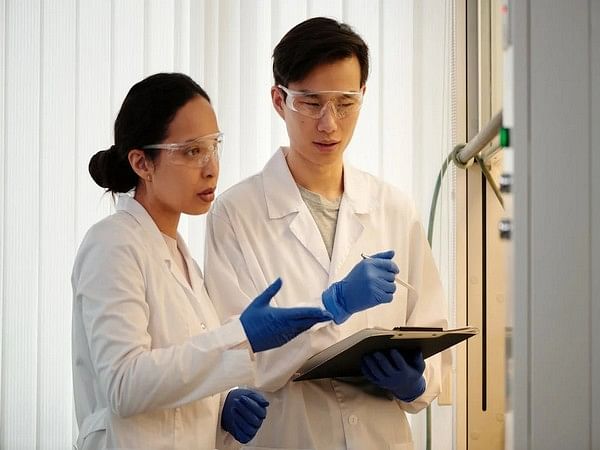Los Angeles [US], January 31 (ANI): Green roofs have grown increasingly popular thanks to their benefits relating to climate adaptation, mitigation, and urban biodiversity management.
Kiara kisses hubby Sidharth in new pic, shares glimpses from his birthday celebration
These planted surfaces on building rooftops absorb excess stormwater, reduce energy consumption by insulating buildings, chill neighbourhoods, moderate urban heat islands, and provide urban homes for plants, pollinators, and wildlife.
However, in the United States, green roofs are often planted with non-native plants in sterile soils, and their usefulness decreases over time.
A Dartmouth-led study team sought to establish whether regulating green roof soil bacteria may improve healthy urban soil growth, a methodology that could be used to increase climate resilience in cities.
The team created an experimental green roof in Chicago to test how enhancing soil with native prairie microbes would change the soil microbial community over time. They were particularly interested in tracking the presence of beneficial mycorrhizal fungi.
Mycorrhizal fungi are well-known to live in roots and support plants in a symbiotic underground relationship, delivering nutrients and water to them in exchange for plant sugars. Mycorrhizal fungi could be particularly helpful to plants on green roofs that have to endure high temperatures, intense sun, and periodic flooding.
The researchers added soil rich with native mycorrhizal fungi obtained from a locally restored prairie, referred to as “inoculum,” to the experimental green roof’s soil.
They planted inoculated and untreated soil with native prairie plants and green roof succulents. Over two years, the team tracked changes in the mycorrhizal fungal community of the green roof.
They also compared the green roof fungal species identified to those present in the inoculum and in the air.
Their findings demonstrate that active management of green roof mycorrhizal fungi accelerates soil development faster than if mycorrhizal fungal communities are left to passively reestablish on their own. Green roofs treated with mycorrhizal fungi foster a more diverse soil community that is more likely to support long-term green roof sustainability, according to the results published in New Phytologist.
“In this urban rooftop setting, we saw more diversity in the fungal communities of the inoculated soil,” said lead author Paul Metzler, soil ecology lab manager in the Department of Environmental Studies at Dartmouth.
“The long-term and consistent effects of the inoculum were quite surprising, as it’s not necessarily something you would expect when working with such small microorganisms.”
Using a molecular technique called “DNA metabarcoding,” which enables the identification of multiple organisms in one sample, the researchers could identify fungi present in the green roof soils as well as potential sources of these fungi. Many fungi came from the inoculum while other species got there through some other vector such as wind.
The co-authors state that their study was different than most of its kind, as few studies track mycorrhizal community shifts over time post-inoculation and even fewer attempt to track the sources of species pools. The team also had a number of species on their green roof that likely arrived via unmeasured vectors such as birds, insects, or even rats.
Still, the most diverse fungal communities were those that had been treated with the inoculum, illustrating how mycorrhizal fungi could be used to improve soil health on green roofs. The results suggest that active management of soil microbial communities is effective and worth the effort and resources in cities.
“Green roofs have a shelf life and they’re not always the self-sustaining ecosystems that we think they are,” said senior author Bala Chaudhary, an associate professor of environmental studies at Dartmouth.
“They can be beneficial to urban areas but tend to lose their efficacy over time.”
While green roofs are marketed as “set it and forget it,” the co-authors explain that ecological thought should be incorporated into their design, construction, and maintenance to maximize the benefits and role that green roofs play in the climate resilience of urban areas.
“Our cities could be a window into the future,” said Chaudhary.
“They are experiencing the impacts of climate change–warming temperatures and increased drought and flooding–in an intensified way, which makes them a great microcosm to study some of these impacts below ground.” (ANI)
This report is auto-generated from ANI news service. ThePrint holds no responsibility for its content.






